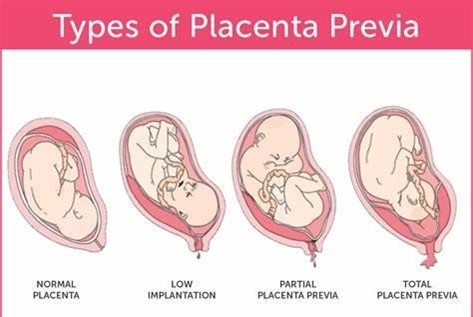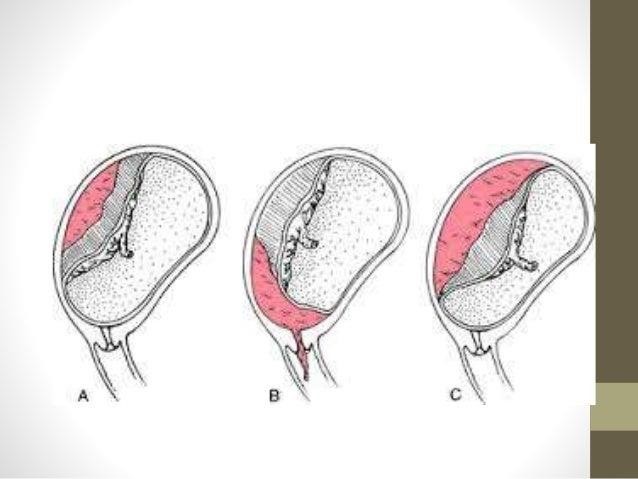Which condition seen in the postpartum period is likely to require careful medical assessment?
Headaches
Varicosities of the legs
Carpal tunnel syndrome
Periodic numbness and tingling of the fingers
The Correct Answer is A
Choice a) Headaches is correct because this is a condition that can indicate a serious problem in the postpartum period and may require careful medical assessment. Headaches are common in the first few weeks after giving birth, but they can also be a sign of complications such as preeclampsia, eclampsia, cerebral venous thrombosis, meningitis, or aneurysm. Preeclampsia and eclampsia are conditions that cause high blood pressure, proteinuria, and seizures in pregnant or postpartum women. Cerebral venous thrombosis is a blood clot in the brain that can cause stroke-like symptoms. Meningitis is an infection of the membranes that cover the brain and spinal cord. Aneurysm is a bulge or rupture in a blood vessel that can cause bleeding in the brain. These conditions can be life-threatening and require immediate treatment. Therefore, women who experience severe, persistent, or unusual headaches in the postpartum period should seek medical attention as soon as possible.
Choice b) Varicosities of the legs is incorrect because this is not a condition that usually requires careful medical assessment in the postpartum period. Varicosities are enlarged or swollen veins that appear blue or purple under the skin. They are common in pregnancy due to increased blood volume, hormonal changes, and pressure from the growing uterus. They usually improve after delivery, but may persist or worsen in some women. Varicosities are usually harmless and do not cause any symptoms, but they may cause cosmetic concerns, discomfort, itching, or bleeding. They can also increase the risk of superficial thrombophlebitis, which is inflammation of a vein near the skin surface. However, these complications are rare and mild, and can be managed with conservative measures such as compression stockings, elevation of the legs, exercise, and painkillers. Therefore, women who have varicosities of the legs in the postpartum period do not need to worry too much, unless they have signs of infection or deep vein thrombosis, which is a more serious condition that involves a blood clot in a deep vein that can travel to the lungs and cause pulmonary embolism.
Choice c) Carpal tunnel syndrome is incorrect because this is not a condition that typically requires careful medical assessment in the postpartum period. Carpal tunnel syndrome is a condition that causes numbness, tingling, pain, or weakness in the hand and wrist due to compression of the median nerve that runs through a narrow passage called the carpal tunnel. It can occur in pregnancy due to fluid retention, hormonal changes, or repetitive movements. It usually resolves after delivery, but may persist or recur in some women. Carpal tunnel syndrome is usually mild and does not cause any serious complications, but it may interfere with daily activities or quality of life. It can be treated with conservative measures such as splinting, icing, massage, stretching, or painkillers. In severe cases, surgery may be needed to release the pressure on the nerve. Therefore, women who have carpal tunnel syndrome in the postpartum period do not need to seek medical attention urgently, unless they have signs of nerve damage or infection.
Choice d) Periodic numbness and tingling of the fingers is incorrect because this is not a condition that generally requires careful medical assessment in the postpartum period. Periodic numbness and tingling of the fingers can be caused by various factors such as cold exposure, poor circulation, nerve compression, vitamin deficiency, or anxiety.
It can also occur in pregnancy due to fluid retention or hormonal changes. It usually goes away after delivery, but may linger or come back in some women. Periodic numbness and tingling of the fingers is usually harmless and does not indicate any serious problem, but it may cause discomfort or annoyance. It can be relieved with simple measures such as warming up, moving around, shaking out the hands, taking supplements, or relaxing. Therefore, women who experience periodic numbness and tingling of the fingers in the postpartum period do not need to worry too much, unless they have signs of infection or neurological disorder.

Nursing Test Bank
Naxlex Comprehensive Predictor Exams
Related Questions
Correct Answer is A
Explanation
Choice a) This could result in profound bleeding is correct because this is the primary reason why an internal examination should be avoided for a client who has placenta previa. Placenta previa is a condition where the placenta covers part or all of the cervix, preventing normal delivery. An internal examination involves inserting a gloved finger or a speculum into the vagina and cervix to assess their dilation, effacement, position, and station. This can cause trauma to the cervix or the placenta, which can trigger severe hemorrhage and endanger the mother and the fetus. Therefore, this explanation is accurate and appropriate.
Choice b) This could initiate preterm labor is incorrect because this is not the main reason why an internal examination should be avoided for a client who has placenta previa. Placenta previa is a condition where the placenta covers part or all of the cervix, preventing normal delivery. An internal examination may stimulate uterine contractions, which can lead to preterm labor and delivery. However, this is not the most serious or likely complication of an internal examination for a client who has placenta previa, as the bleeding risk is much higher and more urgent. Therefore, this explanation is incomplete and misleading.
Choice c) There is an increased risk of introducing infection is incorrect because this is not a specific reason why an internal examination should be avoided for a client who has placenta previa. Placenta previa is a condition where the placenta covers part or all of the cervix, preventing normal delivery. An internal examination may introduce bacteria or other microorganisms into the vagina or cervix, which can cause infection and inflammation. However, this is a general risk that applies to any pregnant woman who undergoes an internal examination, not just those who have placenta previa. Therefore, this explanation is irrelevant and inaccurate.
Choice d) There is an increased risk of rupture of the membranes is incorrect because this is not a relevant reason why an internal examination should be avoided for a client who has placenta previa. Placenta previa is a condition where the placenta covers part or all of the cervix, preventing normal delivery. An internal examination may cause rupture of the membranes, which are the sacs that contain the amniotic fluid and the fetus. However, this is not a significant or common complication of an internal examination for a client who has placenta previa, as the membranes are usually located above or away from the placenta and cervix. Therefore, this explanation is improbable and inaccurate.

Correct Answer is D
Explanation
Choice a) Check the baby's diaper is incorrect because this is not a priority action for a baby who is grunting in the neonatal nursery. Grunting is a sign of respiratory distress, which means that the baby is having difficulty breathing and is trying to keep air in the lungs by making a low-pitched sound with each expiration. Checking the baby's diaper may be part of routine care, but it does not address the underlying cause of the grunting or improve the baby's oxygenation. Therefore, this action should be done after assessing and treating the baby's respiratory status.
Choice b) Place a pacifier in the baby's mouth is incorrect because this is not an appropriate action for a baby who is grunting in the neonatal nursery. Grunting is a sign of respiratory distress, which means that the baby is having difficulty breathing and is trying to keep air in the lungs by making a low-pitched sound with each expiration. Placing a pacifier in the baby's mouth may interfere with the baby's breathing and worsen the grunting, as it can obstruct the airway, increase the work of breathing, or cause aspiration. Therefore, this action should be avoided or used with caution for babies who are grunting.
Choice c) Have the mother feed the baby is incorrect because this is not a safe action for a baby who is grunting in the neonatal nursery. Grunting is a sign of respiratory distress, which means that the baby is having difficulty breathing and is trying to keep air in the lungs by making a low-pitched sound with each expiration. Having the mother feed the baby may increase the risk of choking or aspiration, as the baby may not be able to coordinate sucking, swallowing, and breathing. Therefore, this action should be delayed or modified until the baby's respiratory status improves.
Choice d) Assess the respiratory rate is correct because this is the most important action for a baby who is grunting in the neonatal nursery. Grunting is a sign of respiratory distress, which means that the baby is having difficulty breathing and is trying to keep air in the lungs by making a low-pitched sound with each expiration. Assessing the respiratory rate can help to determine the severity and cause of the respiratory distress, as well as guide further interventions such as oxygen therapy, suctioning, or medication. The normal respiratory rate for a newborn ranges from 30 to 60 breaths per minute, and it may vary with sleep or activity. A respiratory rate above 60 breaths per minute or below 30 breaths per minute indicates abnormality and requires immediate attention. Therefore, this action should be done as soon as possible for babies who are grunting.
Whether you are a student looking to ace your exams or a practicing nurse seeking to enhance your expertise , our nursing education contents will empower you with the confidence and competence to make a difference in the lives of patients and become a respected leader in the healthcare field.
Visit Naxlex, invest in your future and unlock endless possibilities with our unparalleled nursing education contents today
Report Wrong Answer on the Current Question
Do you disagree with the answer? If yes, what is your expected answer? Explain.
Kindly be descriptive with the issue you are facing.
